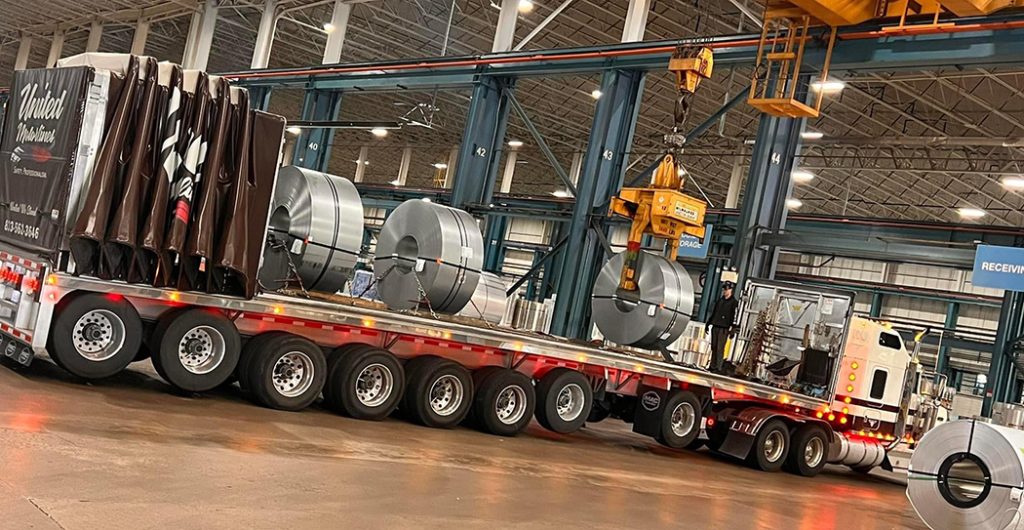
We have done it again, at least most of us have, with a few exceptions. 2023 is now officially behind us. Those few exceptions are only for tax purposes, and they too will catch up soon enough. Many were concerned last year would never end. With each passing month the rates continued to fall and costs ticked up or stayed steadily higher than we had hoped for. So, what can we expect to hope for this year? I don’t know if we “hope” for it or not, but we can expect to hear a lot from politicians promising all our dreams will come true if they get elected. It has been my past experience that the only dreams that come true are theirs – and on our dime.
Before I get too far into the weeds, let’s take a deep breath and think about a simpler time. As we are bombarded with political promises, try not to let our personal preferences overshadow the importance of friendship and trust. The last couple elections have broken homes, disrupted businesses, and ended some lifelong friendships. I would encourage our readers to become involved in the process of selecting their representative candidates for our government, but never forget who they – the candidates – were before the process began.
When I was in college I was once told that the secret to success is mapped by the road you choose. That reminded me of an old adage – “Those who can, do, and those who can’t, teach. Those who can neither do nor teach regulate themselves into politics or religion, of which neither is held responsible.” This selection, as with any purchase, should be obtained based on the value to the user. None of us want to overpay for what we obtain, and the loss of a friend is too high a price to pay for the services rendered. Politicians will disappoint us in time, but a true friend will remind us of who we are and why we are attracted to the other’s company, conversations, and comradery.
I’m glad the Christmas carols are done – I have heard so many over the past few weeks, I was considering jumping off a low bridge into a fishing creek! However, I was worried the fish would throw me back. I’m guessing the radio stations never got the message about moderation. When the airwaves are overloaded with too much of the same thing, somehow the message gets lost. Fortunately, seasons have an expiration date. Normally, January 1st or New Year’s Day signals the end of last year and the beginning of a new year which many associate with a new beginning. This is the time many of us change our old habits to new ones (or at least try). There is hope in change, and possibly greater promise in the future.
This is also the time of year when opportunities for employment are great, so don’t be scared to look around. Just remember, job recruiters are the same as politicians. What they promise may not be what you receive, and the price of investment may be more than you are willing to spend. With license plates, the cost of maintenance, and insurance for the coming year due this month, you may consider sitting out operating this year. I am seeing more than one truck parked in the yard behind a neighbor’s shed while he has taken a company job. The cost of maintaining a vehicle but not operating it can be the difference between future operations and bankruptcy. Be advised: if you sell paid for equipment there may be tax owed, and capital gains can bite you when you can least afford it.
At the present time truck values are not good. Regarding used equipment, it is a buyer’s market, which is not good for the seller, unlike a couple years ago when people were paying stupid money for average stuff. Most states require you to carry insurance on all owned equipment, but the level of coverage varies from state to state. I have used that option myself a few times. None of us have a crystal ball or can tell the future, but sound financial advice is still a recommended business practice.
Seek out some longtime operators, people who have ridden these cycles before. This is not a new phenomenon, as it happens the same every time. First there is too much freight, then too many trucks, then the bottom falls out of rates and the market gets saturated with cheap trucks, then we start over again. How you position yourself now can make the difference when things turn around.
Depending on what part of the nation you hale from will determine the temperature at home. That is if you are still there. With the holidays over, the dispatchers have returned to work and, as they say in the movies, “the party’s over” – now it’s time to get back to work. We are hard into winter in most areas with snow and ice now a common occurrence. This brings me to my topic for this month… poor driving habits!
There is no way to sugarcoat it or make excuses for them. Why am I so hot this year? In the past I have been rolling long haul with a box trailer or my reefer. Most of the time I have run in the north country where the drivers are of a different strip. By that I mean they are committed to their trade. They drive not just as a means of making their living but with a sense of pride in the performance of the job. Many of them are generational dependents, as their fathers (and possibly grandfathers) also ruled the roads. They grew up riding in a jump seat watching, learning, and experiencing life on the road. When their time came to assume the reigns, they had already seen a thing or two.
Today we have management teams loading up the pipeline for truck driver jobs. Most recruiters have no actual experience behind the wheel, as their “qualifications” are a college degree in Human Resources. Many of the mega fleets are employing a workforce that works from home, so unless a window is broken and the snow drifts between the kitchen and dining room, they will never have to make a life threatening choice. If you haven’t guessed, I don’t hold their opinion about who makes a good candidate for this job very high.
This month I’m going to target some of us – the long haul drivers who run the big roads. In the last year I have traded my tandem axle reefer for a spread-axle flatbed. I didn’t get rid of the equipment, I just rented an additional trailer to change my freight preference. Maybe if my health gets better, I can get back to running the West Coast again, because I sure miss the safety of an open road. There are many drivers out here who think driving a truck is like a video game – if you crash, you can simply hit the reset button and start over.
Let me reach out to the “seasoned drivers” out there who have been around for a while. I refrain from placing a time limit in years because some drivers pick up the tricks faster than others. I am reminded of a discussion years ago when an older driver set me down and reprimanded me for a foolish maneuver I made in a snowstorm. He explained that all drivers will progress rapidly during their first 30 days behind the wheel – he called them 30-day drivers. He then proceeded to say that is where many drivers stop trying to improve, because they are doing it satisfactorily, and don’t see the benefits of improving. He then pointed out drivers who had been with his company for upwards of 30 years, but they were still only 30-day drivers, because they hadn’t improved their skills or their attitude towards the job.
For the drivers who still consider this a skilled trade and not just a job, it’s your responsibility to teach the unwilling and unknowing the right way to drive. That means no feet on the dash or cellphones in your hands! Start with real shoes on your feet and, for heaven’s sake, put on trousers – you are not on vacation or lounging by the pool, you are at work. There are a lot of young drivers who don’t know the difference. I often ask these folks, if they were a shoe salesman would they wear that to work. Most say no, so why would you think it’s appropriate to wear it here? The next response is often, “No one has ever said anything to me,” which I usually follow up with, “Does that make it right?” If you want to be a pool boy then apply for that job, but if you want to be a skilled professional, then act like one.
I realize being a professional is more than just how you dress, it’s the way you drive, as well. It’s the interaction between you and other drivers on the road. If I had my way every driver would wear Levis with a seam pressed in the crease, a pair of shiny Tony Lama boots, and a Panhandle Slim shirt with pearl snaps. Well, that’s just me, and not everyone likes my style, so I will settle for serviceable and presentable work clothing. Fortunately, the steel mills where I load these days have a required dress code – it’s called PPE (Personal Protective Equipment), which includes hard soled shoes, long pants, full shirt sleeves, a safety vest, and a hard hat, and everyone must comply. I can hear the naysayers already complaining, “No one is going tell me what to wear!” No, they won’t, and they won’t load you either. End of discussion.
Many flatbed steel haulers get injured doing this job, but loading and unloading is not the worst part of it – it’s the hauling that causes the most damage. In the process of manufacturers using these iron products we must first move them from the mills (black iron) to the picklers (cleaning process), then to the slitters (cutting-edge process), then to the tubers or the stampers, and then to the end users. Each move has its own challenges. This region of the world is called Steel Country, and the place where iron comes from and goes to (primarily the I-80 and I-94 corridor from Chicago to Detroit and from Pittsburgh down to Louisville). Years ago, it was referred to as the rust belt. Today it’s the money belt, and one of the few places that still manufactures USA-made products.
I am addressing this subject as a matter of safety, not just mine, but yours, as well. I will set some ground rules. If you crash, the worst that will happen to your rig is you jackknife and bend up some sheet metal on the cab extenders. Maybe you dent the side rails of your reefer or scratch some paint. If we wreck (flatbed steel haulers), it’s much more dangerous since the freight we haul does not always stay inside the confines of the trailer. Did you ever wonder what those canvas sides were concealing? Often times there is a single coil of steel, weighing up to 60,000 pounds, and in some cases, there is more than one coil, with permitted loads up to 120,000 lbs. and grossing up to 161,000 lbs.
Most drivers with these heavy loads are not traveling at the maximum posted speed, so they tend to cause traffic to bunch up. These speed differences can be the cause of great frustration. Many western and southern trucks set their cruise controls, tune the radio, and let it ride. They get in the habit of rolling unobstructed through miles of open country as they cross the plains of Kansas or Nebraska, or many of the states west of the Mississippi River. Here in the upper Midwest, things are different. We, for the most part, are not pushing the 70 mph limit. There is a speed requirement for weight restricted loads. Before you start to complain about us not having satisfactory brakes, it’s not the trailer we can’t stop – it’s the freight. Should the securement fail or break loose, the loaded product can and will run, and often off the deck of the trailer and into traffic.
I haul a lot of coils both suicide (eye to the side), shotgun (eye to the front), and skidded or stacked (eye to the sky), but all of them can kill someone if they get loose. Not only are the coils risky to move, but we also relocate sheered flat stock, as well. These can weigh up to and exceed 1,000 lbs. per sheet. Many of our pieces are 60 inches wide and 10 feet long or larger. These are stacked about waist high with wood 4x4s between. If just one of them slides out of place the whole stack goes with it. They will fan out like a deck of cards. Should one of them hit a car, it will open it like a can opener, and the occupants don’t stand a chance. Neither does your fiberglass and aluminum cab – it will slice through it, too.
Did I mention the steel tubes we transport in bundles of different sizes? These are used in the construction of auto racks and recreation equipment (campers and trailers). Stopping a load of them is about as easy as redirecting a Roman spear. If you hit something, the chance of those tubes or sticks going clear through your cab without slowing down, is very high. It’s a good idea to just steer clear of the potential dangers when sharing the highway with high risk commodity haulers like me.
I don’t bring this stuff up to scare anyone, but to educate those who haven’t progressed past the 30-day mark. Many of these steel haulers are toting double trailers with a total of 11 axles. Just know they are heavy, and they are not interested in racing you. Besides that, your 13-liter engine isn’t big enough to start their horse, so don’t try to impress them. The rule to remember is they get paid by the pound, not the mile, so give them room to maneuver, stop, and be prepared for a long and slow acceleration period after they do stop.
Steel haulers use many different axle configurations to allow for extra weight, so regardless of the horse, just know we loaded the wagon. Very few of these guys and gals have automatic transmissions, so we won’t be doing any jack rabbit starts, either. It won’t do any good to flash your lights or pass on the right shoulder. Please don’t cut us short when passing, as it’s hard enough to maintain speed when 4-wheelers weave in and out of traffic. Don’t add to our frustration by doing the same.
As we travel into the new year, all of us should up the game and improve our skillset. I will be making a special effort to help others where I can and try to promote safety when I can. Don’t be afraid to seek advice and at times ask for help from other drivers. This isn’t a contest, there won’t be any promotions or bonuses paid based on stupid choices and poor decisions. The highway is not the place to test your speed or your brakes. All it will take is for a steering tire to give out or some other distraction and the driver loses control, putting into effect a chain of events that can be career and possibly life threatening.
Bad weather, poor road conditions, and unlikely time restrictions are trouble enough for all of us. Don’t be the one who shuts down the highway for a fatal accident. Those few seconds you save could cost your career and more. 2024 is here. I’m making it the “Year of the Driver,” so buckle up, grab the shifter, feather the fuel with your right foot, and release the brakes. Roll safely, because the highway is my home, 10-4!

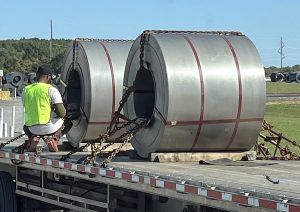
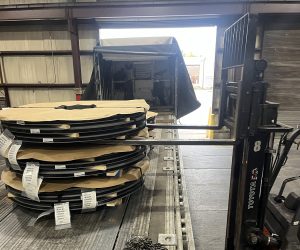
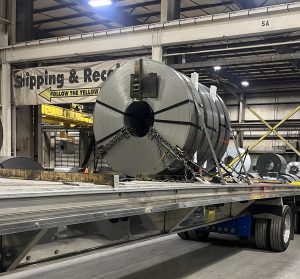
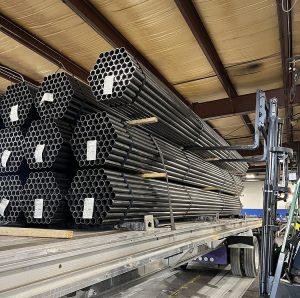
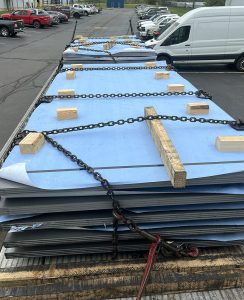
1 Comment
You did it again Dennis. Your articles are usually the first I read when I pick up the magazine. The pretty trucks are nice to see but the driving is the reason I am out here anyway.
Tried flatbed once, but being a small female I had a lot of trouble with the tarps. Chaining wasn’t the issue. Have been on the road since ’74, but rode with my Dad since I was 10 (’52), so seen a lot of real driving back then. Sometimes I am not sure newer drivers even got to the ’30 day’ lessons!
I firmly believe that ‘Cruise Control’ is why so many multiple crashes have occurred.
Steering wheel holders just set it and ride.
I learned to use it when the traffic is light and roads are dry. Run mostly the West coast now, part time.
Just not comfortable driving the new speed limits going E.
After all I remember when trucks were limited to 50 mph and cars did not have a limit!
Hope there are some newer drivers reading your thoughts, sure do need to.
Thanks for your time.